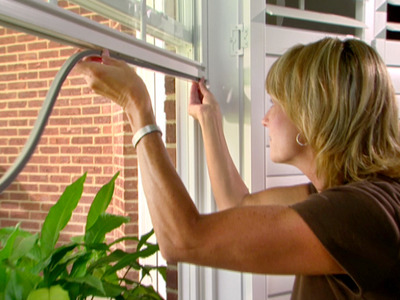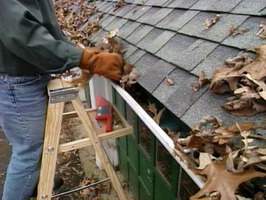Here are a few do it yourself tips courtesy of the Do It Yourself Network to keep your house in shape and help keep you warm this winter.
Home Exterior
Check and clean gutters and downspouts and make sure all drainage areas are unblocked by leaves and debris. If you haven’t already, it may be a good time to consider installing gutter guards.
Lower humidity and cooler, but not freezing temperatures make fall a good time to paint the exterior of your home.
Inspect your roof, or hire a licensed professional to examine your roof for wear and tear. If the shingles are curling, buckling or crackling, replace them. If you have a lot of damage, it’s time to replace the entire roof. Also, check the flashing around skylights, pipes and chimneys. If you have any leaks or gaps, heavy snow and ice will find its way in.
To prevent exterior water pipes from bursting when freezing temperatures being to arrive, turn off the valves to the exterior hose bibs. Make sure and run the water until the pipes are empty, and all the water is drained from the pipes, if no the water can freeze up and damage the pipes.
 Doors and Windows
Doors and Windows
The change in temperature and humidity and normal wear and tear can cause window seals to crack and shrink. Check your windows and doors inside and out for leaks and drafts. Caulk cracks or install weather stripping around windows and doors, including the garage door. Replace screens with storm windows and clean them if needed.
Keeping Warm
Have your wood-burning fireplace inspected, cleaned and repaired to prevent chimney fires and carbon monoxide poisoning.
Wrap water pipes that run along exterior walls with heating tape. It will save energy and prevent them from freezing.
Clean and replace filters in your furnace or heating system. Contact a licensed heating contractor to inspect and service your gas heater or furnace to avoid carbon monoxide poisoning. Your local utility company will often provide this service for free.
If you use a hot water system for heating, drain the expansion tank, check the water pressure, and bleed your radiators.
Check the attic to make sure the insulation is installed properly. The vapor barrier on insulation should face down toward the living space. If it is installed incorrectly (with the vapor barrier facing up) then the insulation will trap moisture causing possible water problems. Cut slits in the vapor barrier to allow moisture to escape. To install attic insulation, unroll the insulation with the paper side out. Install small pieces of insulation between the joists on the attic floor. Be careful not to step between the joists.
Attic Pest Control
Pests love attics because they are full of nice warm insulation for nesting, and they offer easy access to the rest of the house. With gable vents that lead into the attic it is a good idea to install a screen behind them to keep those critters out.
Even after closing off those entryways, pests can still find a way in. The first place to check for any unwanted guests is under the kitchen cupboards and appliances.

